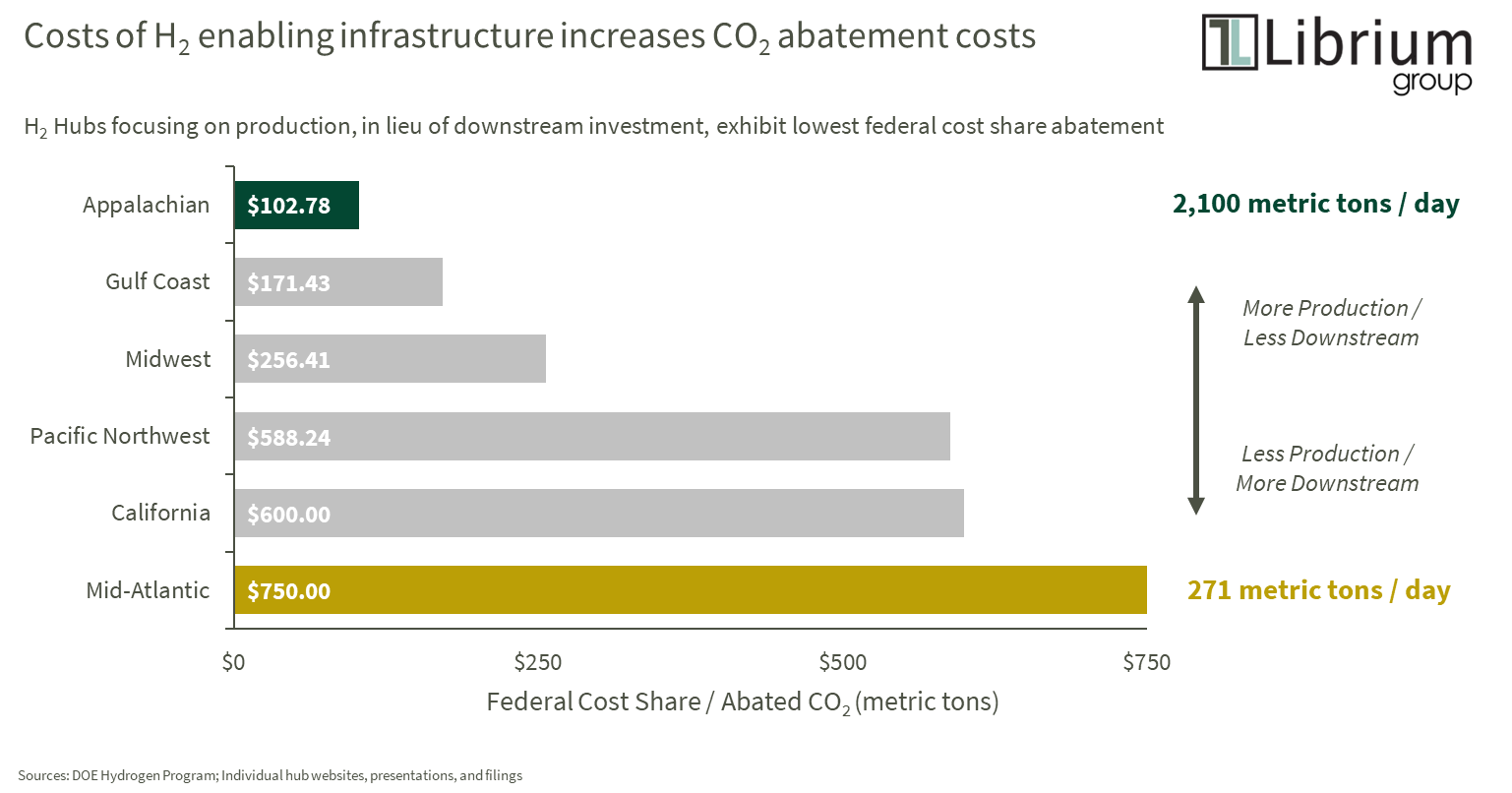Variability in Carbon Efficiency of Enabling Hydrogen
The Department of Energy (DOE) hydrogen hubs may shape the future of the U.S. hydrogen economy, each with different focuses. Some prioritize hydrogen production, while others invest more heavily in downstream activities like pipelines and storage infrastructure. This diversity may allow for tailoring the regions’ hydrogen economies, but it also makes evaluating their overall impact more complex.
Hubs focused on downstream investments play a key role in building out the hydrogen supply chain, but they generally reduce far less carbon than those centered on production. For instance, hydrogen production hubs utilizing carbon capture technologies in regions like Appalachia and the Gulf Coast are poised to more efficiently lower emissions.
Unlike renewable energy projects, whose environmental benefits can be evaluated based on carbon reduction alone, hydrogen hubs require a more nuanced approach. Renewable power projects’ benefits piggyback on decades of grid investment that had no mandate to reduce emissions. The hydrogen economy does not have the leverage of historical investment, and as a result the cost comparison to other carbon reduction technologies is stark.
As federal cost-sharing funds are allocated, the challenge becomes communicating these hubs' full impact. How well the DOE and the hubs explain the broader social and environmental benefits will be crucial to gaining support.
As more data emerges, it will be important to track not only the technical progress of each hub, but also how effectively their comprehensive value is communicated.





